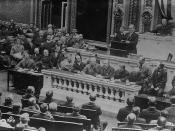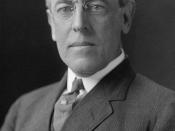6. Prior to the 19th century, women had a very different style of life and work. Most women usually found work either as domestics or as seamstress, milliners, or dressmakers. But by the 1880's the work industry drastically changed for women. Many women could now be found working outside the home in employments such as the textile industry. The time at which women wanted to work outside the home in order to influence society was known as social feminism.
Women who were known as social feminist were on both sides of legislation by supporting and opposing wages and hours. These women investigated factory working conditions, worked in settlement housings, such as Hull House, and rated exposed prostitution rings. These women were usually from the working class and were part of all types of governments such as; Republicans, Democrats, anticommunist, anarchists and socialists.
One example of a woman who continued the movement for social feminism was Margaret Bancroft.
She founded the Bancroft Training School for the multiply disabled of Haddonfield in 1883. Mary Philbrook is another example of a New Jersey woman who exemplified the working women. She became the first New Jersey woman lawyer, in 1894, to gain admittance to the bar. Her admittance was possible as a result of an enabling act through the New Jersey legislature. Mary Philbrook, who met Alice Paul during a suffrage demonstration, worked throughout her life for equal rights for women, social reform, and world peace.
Finally another woman who projected the role of social feminism was Juliet Cushing. She was largely responsible for the introduction of the state factory inspection. She worked tirelessly for limits on child labor through out her lifetime in Jersey. Juliet Clannon Cushing of East Orange began the Consumers' League of New Jersey. She served as the Leagues president...


